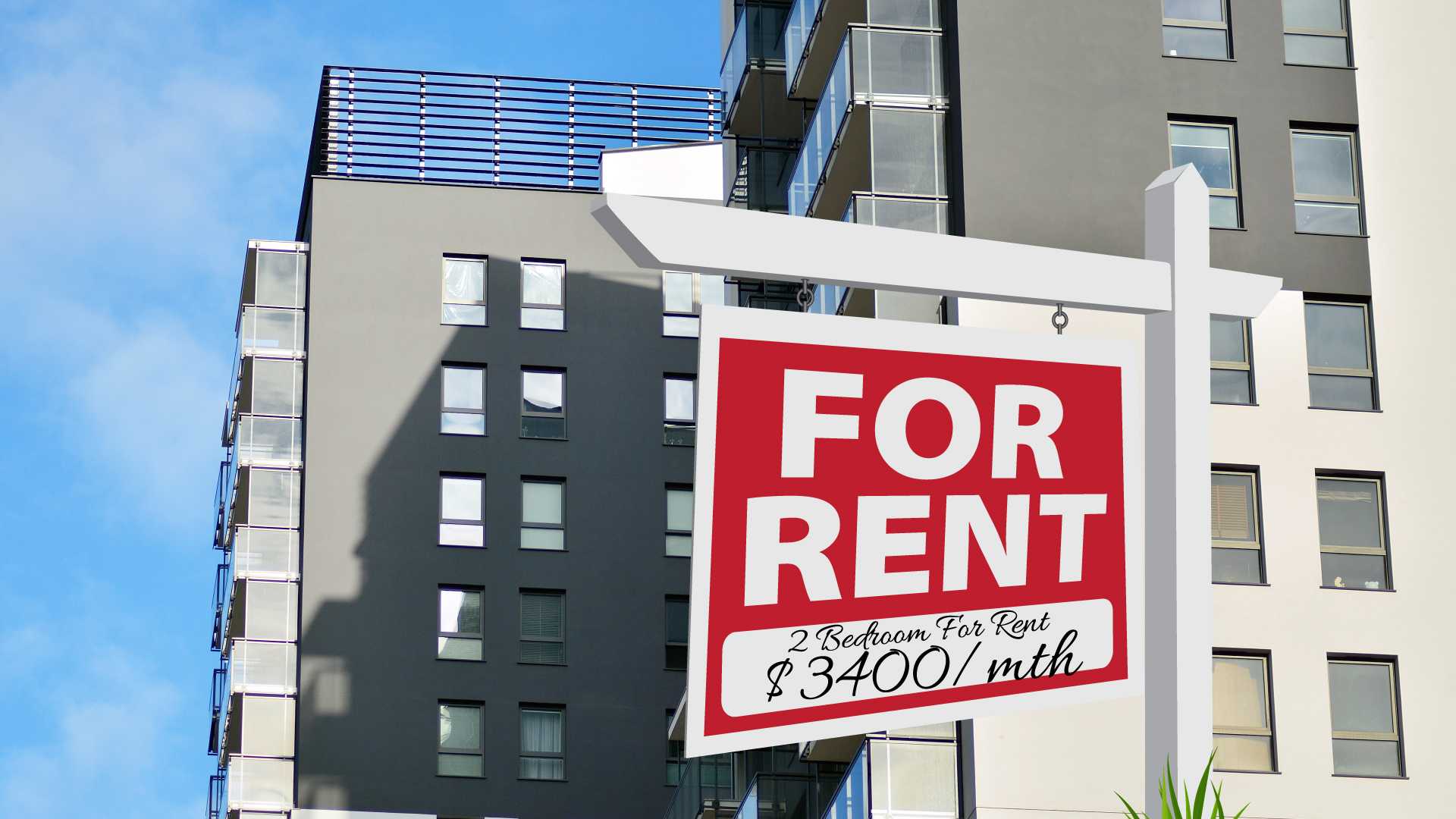Community News
To Mask, or not to Mask – Will masking remain a personal choice in Ontario?
Published
1 year agoon

BY SIMONE J. SMITH
“There is no specific evidence to suggest that the wearing of masks by the mass population has any particular benefit.” ~ Health Emergencies Program Executive Director Mike Ryan (WHO)
I am sorry readers, unfortunately we are here again. I can’t even tell how many articles I have written in the last three years, how many unnecessary debates I have had over this topic, and how many research studies have come out that discuss this redundant topic. The mask debate is back in full swing and several countries have decided to re-implement mask mandates, and at this point it is worth asking, how effective are masks really?
Let’s jump into this; first of all, surgical masks were designed to keep medical personnel from inadvertently infecting patients’ wounds, not to prevent the spread of viruses. It is important that we know that public-health officials’ advice in the early days of COVID-19 was consistent with that understanding. Then, on April 3rd, 2020, CDC changed its guidance and stated that the general public should hereafter wear masks whenever sufficient social distancing could not be maintained.
After that mask mandates were implemented in almost all world countries and in most places where masks were not obligatory, their use in public spaces was recommended. These mandates and recommendations took place despite the fact that most randomized controlled trials carried out before and during the COVID-19 pandemic concluded that the role of masks in preventing respiratory viral transmission was small, null, or inconclusive.
Despite these blaring researchable facts, the world has slowly begun to implement mask mandates. In Australia, Queensland Premier Annastacia Palaszczuk warned that citizens should brace for a “fourth wave” by masking and taking booster shots. Professor Adrian Esterman, Chair of Biostatistics and Epidemiology at the University of South Australia, echoed her call.
“The onus is now on the other states and territories to follow Queensland’s lead and upgrade their health advice, and if necessary, re-impose some public health measures, like face mask advice.”
Discussions in: Germany, Spain, the UK and other places in Europe have also been underway in recent weeks about whether to re-impose mask mandates ahead of the coming winter.
I came across a profoundly important study conducted by German physician Dr Zacharias Fögen to find out whether mandatory mask use influenced the COVID-19 case fatality rate from August 1st, 2020, to October 15th, 2020. What he discovered is something that he calls the Föegen Effect. This is the idea that deep re-inhalation of droplets caught on facemasks might make COVID-19 infection more likely or more severe.
“The fundamentals of this effect are easily demonstrated when wearing a facemask and glasses at the same time by pulling the upper edge of the mask over the lower edge of the glasses. Droplets appear on the mask when breathing out and disappear when breathing in.”
According to Zacharias, “In the Foegen effect, virions (because of their smaller size) bypass the bronchi and are inhaled deep into the alveoli, where they can cause pneumonia instead of bronchitis, which would be typical of a virus infection.
Furthermore, these virions bypass the multilayer squamous epithelial wall that they cannot pass into in vitro and most likely cannot pass into in vivo. Therefore, the only probable way for the virions to enter the blood vessels is through the alveoli.”
He continues to explain that wearing masks could end up increasing your overall viral load because, instead of exhaling virions from your respiratory tract and ridding your body of them, those virions are caught in the mask and returned.
I didn’t want to rehash old reports that I have written, so I continued to dig to find out what else was being said about the issue. I came across an article by Jeffrey H. Anderson who writes about several trials conducted over the past few years, each of which found that cloth masks and surgical masks offer very little to no benefit at all.
In Canada, advocacy groups like Ontario School Safety and others are calling for mask mandates children ahead of a predicted winter uptick of COVID cases, and last week, Ontario’s health minister said it’s a “personal choice” to wear a mask Tuesday, one day after the province’s top doctor urged everyone to do so in all indoor spaces.
A masked Sylvia Jones defended the majority of her Progressive Conservative colleagues who did not wear masks in the legislature — including Premier Doug Ford. “Personal choice is important here, and we should not be passing judgment on people who wear a mask or not wear a mask,” she said outside the legislature while wearing a mask.
Also last week, Ontario’s top doctor “strongly recommended” Ontarians mask up once again in all indoor settings, including schools and childcare centres, in an effort to help overwhelmed children’s hospitals.
Dr. Kieran Moore stopped short of mandating masking but had previously said he would recommend masking in certain indoor settings if hospitals began cancelling surgeries.
“What we are facing is a triple threat,” said Dr Moore. “All three are actively circulating across Ontario in all of our communities. This is different from COVID. This is about protecting our children. Please, parents, grandparents, siblings, if you have respiratory symptoms, you must mask around those that are vulnerable.”
Masking may help decrease the risk at a community level, but I’m very concerned about protecting our children right now and it’s best that we protect them through masking in a home environment and in any social situation.”
Dr Moore said this threat (flu season) requires “collective action” to protect the most vulnerable in the province.
Here comes the fun part. Something that I notice about our health professionals and government officials is that they are unable to practice what they preach, and once they get caught, they always have a valid excuse. Dr Moore is taking some heat after appearing at a public event without a mask after recommending public masking in indoor settings days earlier.
He was spotted with no mask on in a video taken at a busy indoor gathering last Thursday evening. Thursday night’s Toronto Life event was celebrating the ’50 most influential Torontonians,’ where Moore placed 12th. The magazine said he was influential for “keeping COVID-19 under control.” The video captured Moore watching a performance with a drink in hand while next to several other attendees who were also not wearing masks.
I want to remind everyone that it was just on Monday that he had “strongly recommended” Ontarians mask indoors in an effort to help overwhelmed children’s hospitals.
In a statement sent to CityNews, the Ministry of Health said Dr Moore evaluates the risk of each situation, including private events.
“He follows many layers of protection, including screening daily for symptoms of any respiratory infection, practicing good hand hygiene, staying up to date on immunizations, masking when necessary and distancing, when possible,” a Ministry spokesperson said.
“Dr. Moore continues to encourage everyone to use their best judgment on when it’s appropriate to wear a mask, particularly around the most vulnerable, including young children.”
Premier Doug Ford, who appeared without along with most of his cabinet in Queen’s Park this week, downplayed the significance of footage posted online, saying masking is a personal choice for the people of Ontario after enduring two-and-a-half years of a pandemic.
Well, you heard it people, it is a personal choice. I hope that we don’t see changes to this in a few weeks, but I guess we are just going to have to hold our breath.
We, as humans are guaranteed certain things in life: stressors, taxes, bills and death are the first thoughts that pop to mind. It is not uncommon that many people find a hard time dealing with these daily life stressors, and at times will find themselves losing control over their lives. Simone Jennifer Smith’s great passion is using the gifts that have been given to her, to help educate her clients on how to live meaningful lives. The Hear to Help Team consists of powerfully motivated individuals, who like Simone, see that there is a need in this world; a need for real connection. As the founder and Director of Hear 2 Help, Simone leads a team that goes out into the community day to day, servicing families with their educational, legal and mental health needs.Her dedication shows in her Toronto Caribbean newspaper articles, and in her role as a host on the TCN TV Network.

You may like
-


14 Days to a healthier work-life balance
-


Freedom Mas Kick off the start of Band Launch Season 2024
-


How Toronto’s Caribbean Community is Leading in Digital Innovation
-


Almost Homeless – Eight years of Justin Trudeau; Canada’s housing is against the ropes, and Toronto renters suffer
-


Tony Duran (Tony Tonez Tattoos) uses education to demystify and destigmatize the tattoo industry
-


It’s time for a New United Regional Nation of the Caribbean

BY SIMONE J. SMITH
I get it; you just like to stay connected. Everyone does it. Sometimes, it seems like you’re not enjoying yourself as much as you used to. Maybe you’re right, but it’s not like you are addicted, or anything. You can stop whenever you want.
It’s not about being addicted, it’s about finding a balance. Social media can be great, but when it starts affecting your mental well-being, that’s when it becomes a problem.
I get it. It’s easy to get sucked into the digital world without realizing it, but it’s important to take breaks, to disconnect and focus on the real world too, and this week we are going to help you navigate the break that you need to take from the digital diaspora.
In a world where many jobs are fast-paced and digitally driven, the constant influx of emails, notifications, and media feeds can feel overwhelming. For many, being inundated with so much information at once can take a real toll on your mental and physical wellness, but what if there was a way to regain control and harmony again?
In a research study titled, “The Relationship between Social Media and the Increase in Mental Health Problems, (Hasan Beyari) the researcher found that deterioration in mental health is one of the side effects stemming from social media overuse. This study investigated the relationship between social media and the increase in mental health problems in Saudi Arabia. Saudi Arabia has a high level of social media usage, with 82.3% of the population (29.5 million people) using social media in 2022. Young people, who make up 36.74% of the population, are the biggest users of social media in Saudi Arabia, with 98.43% of young people using social networking sites. The top three reasons given by Saudis for using social media are: keeping in touch with friends and family, use of free time, and finding products to purchase.
The researcher recommended that social media users be cautious when interacting with social media features, especially likes, comments, followers, media, and posts, because of their significant effect on mental health.
Another interesting research study titled, “Mental Health Surveillance over Social Media with Digital Cohorts,” (Silvio Amir, Mark Dredze and John W. Ayers) the researchers thought that it was worth noting that they found that Blacks and Hispanics who show a high usage of social media were more likely to be affected by mental illnesses. One possible reason for this disparity is that racial minorities are more likely to come from communities with lower education rates and socioeconomic status (SES), and to be in a position where they lack proper health coverage and mental-health care.
I think that you get the point; it might just be time to step away from that device that for some of you has become your lifeline. I want to introduce the 14-Day Digital Detox Challenge, a challenge that was introduced to me by HubSpot. It is a journey that aims to restore balance and mindfulness in your life, both at work and at home. This challenge has tips, tricks, and tools to help you disconnect where you can—even if your job requires you to be plugged in.
Day One starts your 14-day digital detox challenge with mindful mornings that set the tone for the rest of your day and promotes a sense of calm and focus.
Maintaining a healthy work-life balance is crucial for your overall well-being and productivity.
On Day Two of your digital detox challenge, it focuses on creating clear boundaries between your work and personal life.
On Day Three, you have a chance to organize your digital devices and online presence, so that you can enhance productivity and reduce distractions.
On Day Four of your digital detox challenge, your focus will be on establishing a productive routine that enables focused and efficient work while also allowing time for personal activities and hobbies.
By taking care of yourself physically, mentally, and emotionally, Day Five helps you maintain balance and perform at your best.
Day Six helps you understand that by disconnecting from digital devices and engaging in face-to-face interactions, you can strengthen relationships and joy in your daily experiences.
Day Seven has you setting clear goals, tracking progress, and celebrating accomplishments that can increase productivity and maintain motivation.
Day Eight focuses on: incorporating mindful app usage, setting intentional screen time limits, and reflecting on the impact of excessive screen time. The point is to enhance your well-being and productivity.
By implementing techniques such as: creating filters and folders, utilizing email management tools, setting specific times to check and respond to emails, and writing effective emails, Day Nine shows that you can improve your productivity and reduce email-related stress.
Day 10 is all about re-evaluating your relationship with social platforms and focusing on online activities to reflect on the positive and negative effects of social media on your work- life balance.
Day 11 allows you to explore the importance of avoiding digital multitasking and focus on techniques that can help increase productivity and reduce distractions. By prioritizing single-tasking and implementing strategies like the Pomodoro Technique (designed to improve productivity by breaking work into intervals, traditionally 25 minutes in length, separated by short breaks for time-blocking), you can optimize your work and accomplish more.
Day 12 explores the power of mindful communication and how it can enhance relationships, both in the workplace and personal life. By practicing active listening and mindful communication techniques, you can foster empathy, understanding, and open-mindedness in your interactions.
Day 13 explores the benefits of spending time in nature, and how it can enhance your well-being and reduce stress. Engaging in activities such as walks in the park, gardening, or simply observing and appreciating nature can have a profound impact on your productivity and overall mental health.
Finally, Day 14, the final day focuses on reflection and goal adjustment, allowing you to assess the progress you’ve made throughout the challenge and make any necessary adjustments to your goals. By applying self-reflection and goal-setting techniques, you can continuously improve and set yourself up for ongoing success.
Are you ready for your Digital Detox; don’t worry, in 14 days, you can get yourself back on track, and become even more productive than you were before. Good luck, and if you are open to the challenge, let us know how things go.
Community News
Freedom Mas Kick off the start of Band Launch Season 2024
Published
2 days agoon
April 16, 2024By
Paul Junor
BY PAUL JUNOR
It was an entertaining, inspiring and visually exciting day on Sunday, February 25th, 2024, when Freedom Mas kicked off the start of band launch season 2024. In this the third year of the first and only Jamaican band, led by Johanna Grant, the unveiling of the adult and kids’ costumes were showcased under the theme “What If” at the Small Arts Inspection Building in Mississauga near the intersection of Dixie Road and Lakeshore Shore.
The promotional material on Instagram states, “We are bringing the spirit of Carnival through music, dance, and delicious food. Immerse yourself in the rhythm of the Caribbean with live DJs, playing reggae, soca, and dancehall music that will keep you grooving all day long.” They describe what attendees would be able to experience as they “Explore the diverse marketplace filled with local artisans and vendors offering unique crafts, clothing and accessories.”
There was a wide range of vendors present who showcased a range of services and products targeted to the: Black, African and Caribbean community. One of the vendors was Rose & Ruby Jewelry, which offers the Ultimate Jewelry Guide in which everything you need to know about: cleaning, traveling, measuring and maintaining your pieces. I spoke with Antoinette and Norman of Yardpot Catering Ltd about the different types of authentic: products, services and catering they offered. They are proud of their Jamaican roots and willingly promote the varieties of snacks, treats and products.
I spoke to Johanna who has been the band leader of Freedom Mas since its inception about what she expects for Toronto Caribbean Carnival 2024. She is excited to be the first Mas back to start band launch season 2024. The fact that it occurred during Black History Month was intentional and foundational to connecting carnival to its historic roots as a symbol of independence, freedom and empowerment. There were young and old in the audience who witnessed the visually stunning and stimulating costumes that were showcased during the presentation.
There were several sections that were featured at the band launch, which included:
- Phoenix Mist @thebutterflyave
- KADENCE Rhythmic Flow of
- Essence of Dreams-@queentcarnival
- Thoughts of the Future@angelicxarnival
- Port Royal Pirates of the Caribbean
In the audience was Jennifer Michelle Hirlehey, Board Chair of the FMC and CEO, Mischka Crichton, Stephen Dasko, Councilor of Ward 1, as well as Martin Reid, Councilor of Ward 3 of the City of Mississauga enjoyed the festivities and celebrations as they interacted with the audience.
Linden King, former Chair of the Black Caucus of Mississauga came out to show his support as well as MPP Charmaine Williams Brampton North. “This is another celebration of talent and culture and it’s my privilege to see the product of another Black woman and business powerhouse raise others to excellence and be a part of our history.”
Stephen Dasko, Councilor for Ward 1 Mississauga and Region of Peel was in attendance and was pleased with the turnout at the launch and the high level of community support. “Congratulations to Johanna and the team of the Freedom Mas Band for a great afternoon celebrating Black History Month Carnival Edition.”
The dates of some of the upcoming band launches for the Toronto Caribbean Carnival are:
Lux Carnival – Saturday, March 23rd
E.P.I.C. Carnival – Friday, April 5th
Toronto Revellers – Saturday, April 6th
Sublime Mas- Saturday, April 13th
Fantasia Carnival – Sunday, April 14th
Lavway Mas – Friday, April 19th
Saldenah – Saturday, April 20th
Tribal Knights – Friday, April 26th
Carnival Nationz – Saturday, April 27th
Anyone interested in learning about Freedom Mas can check them out at:
Website:http://freedommasband.ca
Facebook: Freedom Mas Band
Instagram: @freedommasbqbd
YouTube:Freedom Mas Band
Community News
Almost Homeless – Eight years of Justin Trudeau; Canada’s housing is against the ropes, and Toronto renters suffer
Published
3 days agoon
April 15, 2024
BY MICHAEL THOMAS
“After eight years of Trudeau, the average price of a home in Toronto is now over a million dollars and the average rent on a two-bedroom apartment has more than doubled to over $3,200 a month. Canadians can’t afford this and that is why in nearly every city, middle-class Canadians are forced to live in tent encampments.”
The above quote is an attempt to write Justin Trudeau’s biography, or part of his legacy by Scott Aitchison, Conservative Shadow Minister for Housing and Diversity and Inclusion.
According to Aitchison, “Justin Trudeau’s response has been to re-announce a failed loan program, which has only resulted in the completion of 11,000 homes over the course of seven years and create more bureaucracy, which will raise the cost of housing even more.”
What exactly is happening here in Canada? Canadians let us look at the numbers and see if they add up.
According to the RBC Housing Affordability Report, in Toronto, a household earning a median income needed to spend 84.8% of their income just to cover the costs of owning an average home at market price. This metric has “reached its worst level ever.”
It now requires 63.5% of income to buy an average-priced home compared to 2015 when the same measure was 39.3%. The income required to purchase a home in Toronto rose by $11,100 in 2023, to $218,100, according to Ratehub.ca.
A home in Greater Toronto was $1,089,800 in February 2024, compared to $601,800 in October 2015. A rise of almost double the cost. Which working-class family can afford this in present-day Toronto? This information is from the Canadian Real Estate Association.
According to the National Bank, it now takes 25 years to save for a down payment in Toronto. The mortgage payment as percentage of income is 87.8% in Toronto.
I hope that this information takes care of the question, why are so many Torontonians homeless or living in their cars? Maybe not. Here are some troubling homeless stats.
“As of October, [Toronto] is sheltering 10,700 people and turning away approximately 275 others on a daily basis,” said Gord Tanner, the city’s Director of homelessness initiatives. “Growing number of homeless people turning to ERs for shelter and warmth in Ontario. In Toronto hospitals specifically, those cold-weather ER visits by homeless people skyrocketed by 68%.”
Let’s look at where our Canadian tax dollars are going and see if any meaningful progress is being made.
The Apartment Construction Loan Program is an existing program that was rebranded in the 2023 Fall Economic Statement. It was previously the Rental Construction Financing Initiative (RCFI) which was created in 2017. When the program was launched in April 2017, it promised $25.65 billion in loan financing and had an original goal of creating 71,000 new rental housing units by 2027/28. However, in the 7 years since the program launched it has committed $18.19 billion in loans, which has only resulted in the completion of 11,208 homes, as of the latest data from December 2023.
After re-announcing and rebranding the program in the 2023 Fall Economic Statement, Trudeau’s government topped up the program with funding for an additional $15 billion in loans, bringing the total available loans to over $40 billion.
Trudeau’s regime was promising Canadians that this additional funding would create 30,000 additional units, bringing the total units to 101,000 even though the program is not coming anywhere close to completing the original 71,000 homes promised to Canadians in 2017.
Now, the Liberals announced that in Budget 2024, they would fund an additional $15 billion in loans, bringing the total to $55 billion even though less than half of the loans already available under the program have been awarded. Once again Trudeau’s regime promised that this additional funding would support the creation of an additional 30,000 new apartment units, bringing the total to 131,000 units promised with only 11,208 or 8.5% completed. In layman’s terms, Canadians’ tax dollars were spent, and they were lied to.
I spoke to Sam Lilly who is the Press Secretary – shadow cabinet from the office of the leader of the Official Opposition. “From 2015 to now, what has happened,” I asked him?
“We’ve seen Justin Trudeau’s inflationary spending and taxes have put pressure on interest rates and cost of living after Trudeau printed 600 billion worth of money.”
“According to CMHC,” Lilly said, “We are short 5.8 million houses in Canada, and those houses have to be built in the next decade and we are way off target.”
“The next problem,” he said, “is that Justin Trudeau keeps giving money to these municipalities that are blocking the permitting of homes. There is a sort of ‘not in my backyard NIMBYism,’ and Justin just keeps feeding them money –no questions asked.”
The alarming rise of almost double the cost in present-day Toronto creates an insurmountable burden for working-class families, rendering housing increasingly unattainable. Such an escalation disproportionately affects marginalized communities, exacerbating the existing economic disparities. The profound impact of this surge extends beyond mere financial strain, as it amplifies societal inequalities, perpetuating cycles of poverty and exclusion. Urgent measures are imperative to address this crisis and safeguard the fundamental right to adequate housing for all residents, regardless of socioeconomic status.
The repercussions of Justin Trudeau’s inflationary spending and tax policies have become increasingly apparent, exerting significant pressure on interest rates and the cost of living. As citizens navigate these economic challenges, it becomes imperative for policymakers to prioritize measures that promote stability, fiscal responsibility, and sustainable economic growth to alleviate the burden on households and ensure long-term prosperity for all Canadians.
BREAKING: New numbers out today show record housing costs after 8 years of Trudeau.
Photo ops, announcements & government spending don’t build homes. pic.twitter.com/HoR2Q2qYE9
— Pierre Poilievre (@PierrePoilievre) April 3, 2024
REFERENCES:
https://www.ratehub.ca/blog/2023-marks-a-terrible-year-for-home-affordability/
https://www.crea.ca/housing-market-stats/mls-home-price-index/hpi-tool/

14 Days to a healthier work-life balance

Freedom Mas Kick off the start of Band Launch Season 2024

How Toronto’s Caribbean Community is Leading in Digital Innovation

Almost Homeless – Eight years of Justin Trudeau; Canada’s housing is against the ropes, and Toronto renters suffer

Tony Duran (Tony Tonez Tattoos) uses education to demystify and destigmatize the tattoo industry

It’s time for a New United Regional Nation of the Caribbean
YOGA: Surya Namaskar (Sun Salutation) for sufferers of hypertension or heart disease
Kemtek Development launches new exclusive gated community in Jamaica!

Ravi’s West Indian Grocery – Fresh Products Weekly Straight from Guyana!

Tourism-Related Live Streaming – The Manifold Ways it Can Create a Buzz for a Destination

ASA Meats & West Indian Groceries – Serving Freshness & Quality to the Community

Do You Have a 407 ETR Story?

Nadine Sutherland – A woman who continues to reinvent herself

Knia Singh – Light Up The Darkness

Spragga Benz – Light Up The Darkness

Kyle Kemper – Light Up The Darkness

David Icke – Light Up The Darkness

Ohio’s Bill 248 and Dr. Sherri Tenpenny’s compelling testimony
Trending
-

 Community News2 weeks ago
Community News2 weeks agoSkills for Change hosts a highly successful connections fair for youth new to Canada
-

 Community News1 week ago
Community News1 week agoFour helpful tips to get your boss off your back
-

 Community News2 weeks ago
Community News2 weeks agoThe Canadian Banking System is set to be radicalized by an open banking framework
-

 Community News2 weeks ago
Community News2 weeks agoLooking to tantalize your travel senses? In March it was Better In The Bahamas
-

 Community News1 week ago
Community News1 week ago“It’s a demographic tsunami!” Consensus about the benefits of Canada’s mass immigration is now starting to fray
-

 Community News1 week ago
Community News1 week agoOntario invests $16.5 million in Black Youth Action Plan to develop skills for in-demand careers
-

 Community News2 weeks ago
Community News2 weeks agoYoung people grappling with anxiety disorders and OCD can find substantial relief and improved quality of life in 2024
-

 Community News1 week ago
Community News1 week agoCanada’s fails to adhere to its International Human Rights obligations; we can’t have that






